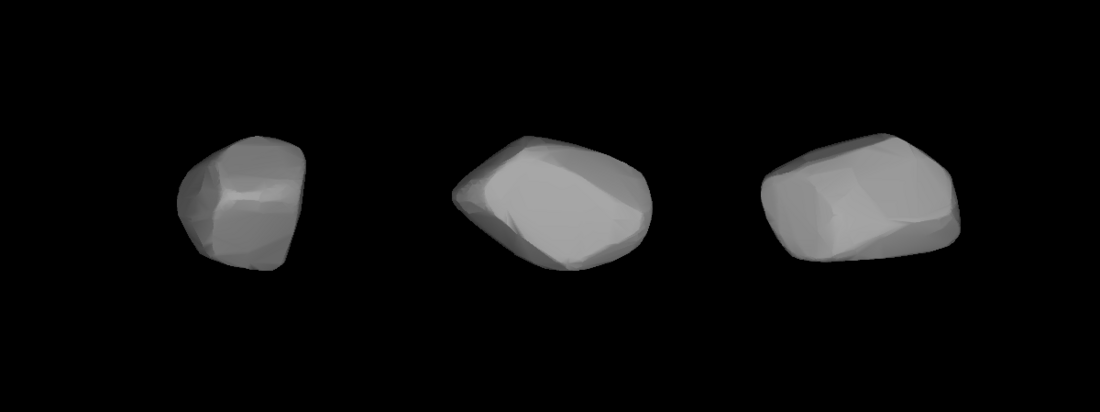Top Qs
Timeline
Chat
Perspective
1102 Pepita
Stony background asteroid From Wikipedia, the free encyclopedia
Remove ads
1102 Pepita, provisional designation 1928 VA, is a stony background asteroid from the outer regions of the asteroid belt, approximately 39 kilometers in diameter. It was discovered on 5 November 1928, by Catalan astronomer Josep Comas i Solà at the Fabra Observatory in Barcelona, Spain.[14] It was named after the discoverer by the feminine form of his nickname.[2] The asteroid has a rotation period of 5.1 hours.[3]
Remove ads
Orbit and classification
Pepita is a non-family asteroid from the main belt's background population.[4] It orbits the Sun in the outer asteroid belt at a distance of 2.7–3.4 AU once every 5 years and 5 months (1,966 days; semi-major axis of 3.07 AU). Its orbit has an eccentricity of 0.11 and an inclination of 16° with respect to the ecliptic.[1]
In May 1899, the asteroid was first observed as A899 KB at Harvard's Boyden Station in Arequipa, Peru (800). The body's observation arc begins with its official discovery observation at Barcelona.[14]
Remove ads
Physical characteristics
Summarize
Perspective
In the SMASS classification, Pepita is a stony S-type asteroid, which agrees with the body's measured geometric albedo (see below).[1][3] Conversely, it is also classified as a carbonaceous C-type asteroid by Tholen.[1]
Rotation period and poles
Three rotational lightcurves of Pepita were obtained from photometric observations by astronomers Hilari Pallares and Enric Forné (2006, U=2), Pierre Antonini and René Roy (2007, U=3), as well as by Robert Stephens (2007, U=3).[10][12] The consolidated lightcurve gave a well-defined rotation period of 5.1054 hours with a brightness amplitude between 0.31 and 0.36 magnitude.[1][12]
In 2011, a modeled lightcurve using data from the Uppsala Asteroid Photometric Catalogue and other sources gave a concurring sidereal period 5.10532 hours, as well as two spin axes of (25.0°, −34.0°) and (231.0°, −30.0°) in ecliptic coordinates (λ, β).[11]
Diameter and albedo
According to the surveys carried out by the Infrared Astronomical Satellite IRAS, the Japanese Akari satellite and the NEOWISE mission of NASA's Wide-field Infrared Survey Explorer, Pepita measures between 30.88 and 41.733 kilometers in diameter and its surface has an albedo between 0.1842 and 0.322.[5][6][7][8][9]
The Collaborative Asteroid Lightcurve Link adopts the results obtained by IRAS, that is, an albedo of 0.1991 and a diameter of 39.27 kilometers based on an absolute magnitude of 9.40.[3][7]
Remove ads
Naming
This minor planet was named after the discoverer, Josep Comas i Solà (1868–1937), by the feminine form of his nickname, "Pepito". He was the first director of the discovering Fabra Observatory and founded the Astronomical Society of Spain and America (Spanish: Sociedad Astronomica de España y América, SADEYA).[2]
The official naming citation was mentioned in The Names of the Minor Planets by Paul Herget in 1955 (H 104).[2] The asteroid 1655 Comas Solà is also named after him, as is the Martian crater Comas Sola.[15]
References
External links
Wikiwand - on
Seamless Wikipedia browsing. On steroids.
Remove ads

